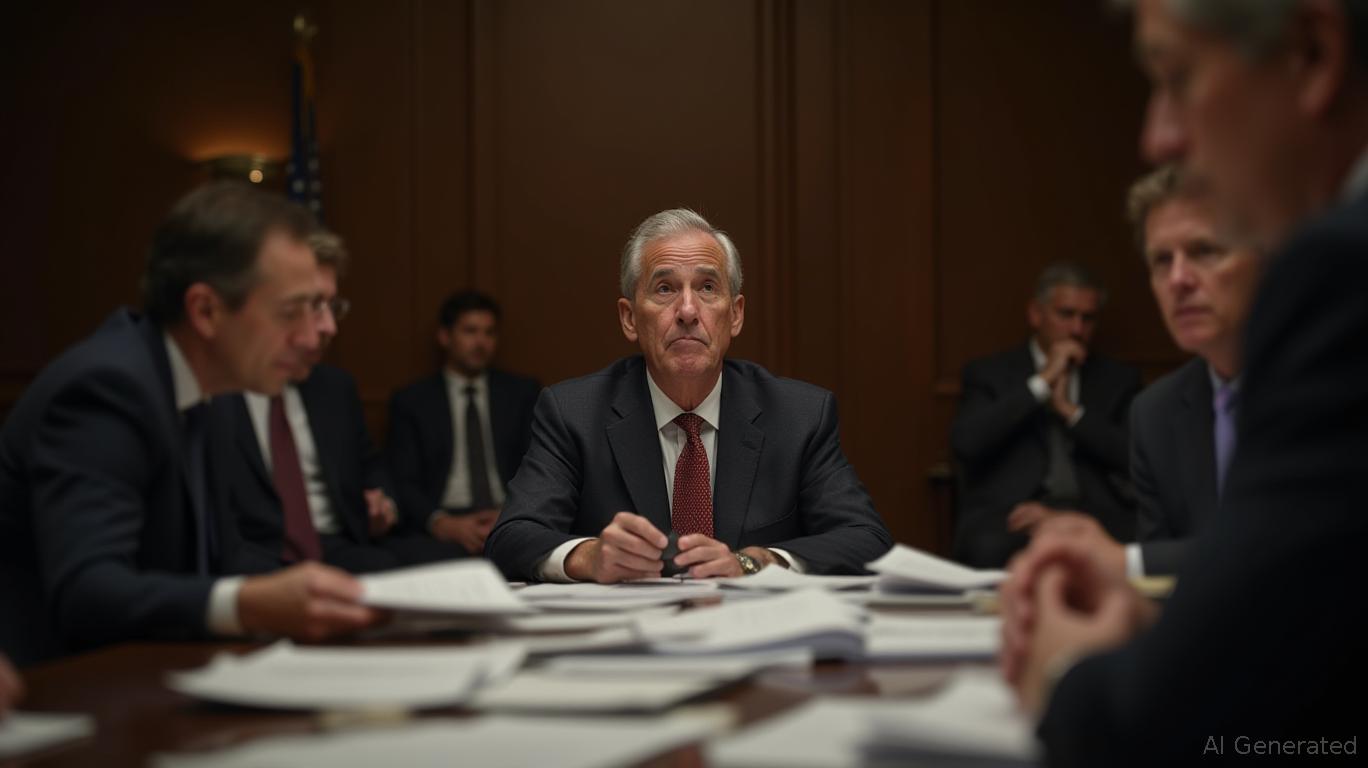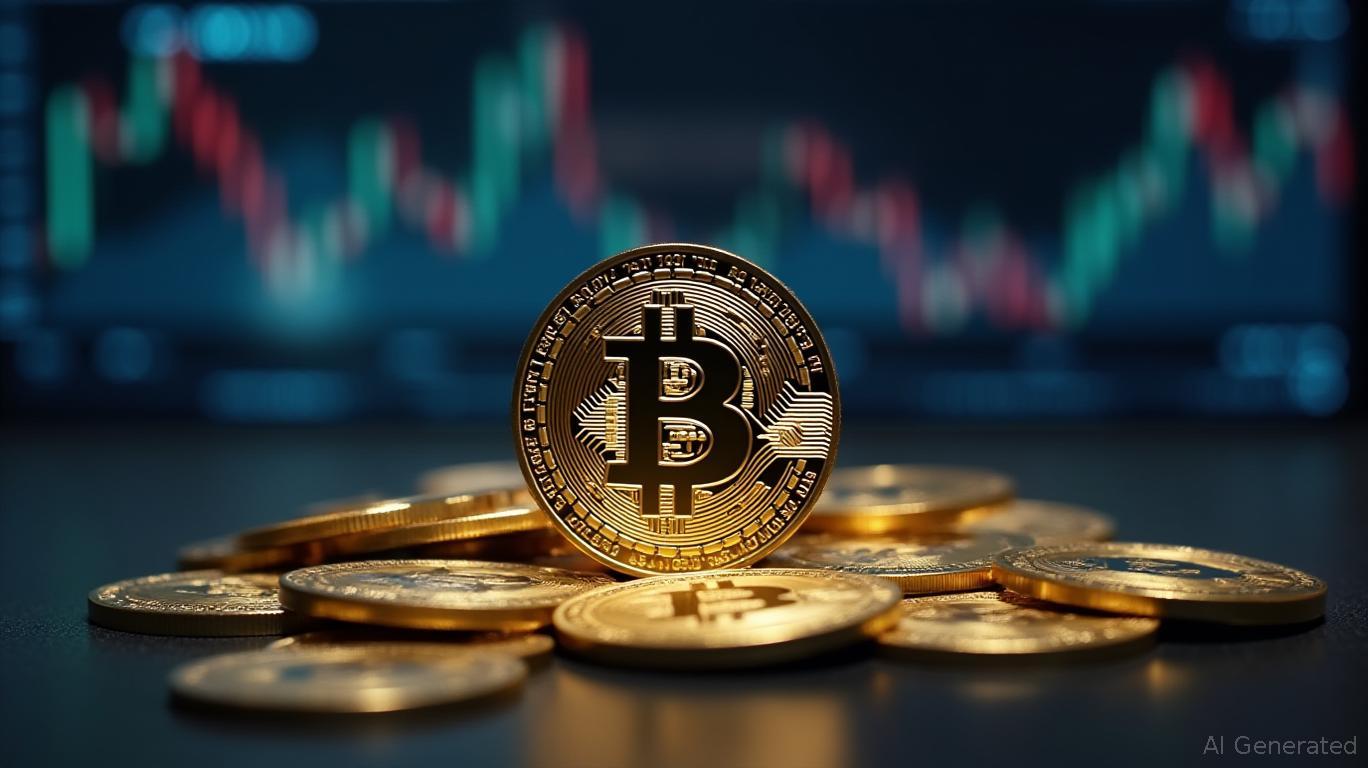AI’s Rapid Economic Growth Ignites Discussion: Genuine Innovation or Market Hype?
- U.S. prioritizes AI as economic stimulus pillar through regulation, corporate strategies, and $1B AMD supercomputer partnerships. - Trump's CFTC nominee Selig aims to unify crypto regulation, addressing gaps critical for AI-driven fintech markets. - AI sector shows divergent trajectories: BigBear.ai faces budget cuts while C3.ai struggles post-CEO exit. - Palantir's 300% 2025 stock surge highlights defense AI demand, but analysts warn of overvaluation risks amid security concerns. - Global AI spending pr
The United States is increasingly making artificial intelligence a central element of its economic growth strategy, with progress seen in regulations, business initiatives, and infrastructure funding. As AI transforms various sectors, its influence goes far beyond stock market swings, affecting policies, innovation, and the nation’s global standing.

Former President Donald Trump’s decision to nominate Michael Selig—currently heading the SEC’s crypto task force—to lead the Commodity Futures Trading Commission (CFTC) marks a deliberate effort to streamline cryptocurrency oversight, according to a
The financial outlook for AI companies is mixed. BigBear.ai, which depends largely on government contracts, saw its projected 2025 revenue fall due to federal spending cuts, as highlighted in
Significant investments in AI infrastructure highlight the technology’s growing economic significance. The U.S. recently entered a $1 billion partnership with AMD to develop supercomputers using its AI chips, aiming to advance scientific research and national security, according to
Palantir Technologies (PLTR) illustrates AI’s economic power, with its stock climbing 300% in 2025 following a series of major contracts, according to
The economic effects of the AI surge are visible in job growth and infrastructure development. The U.S.-AMD alliance and Palantir’s international contracts are expected to create thousands of new positions, while AI’s adoption in industries like healthcare and energy is set to boost productivity. Still, economists warn of potential market bubbles, with Bank of America noting that 54% of investors believe AI-related assets are overvalued. An MIT study also found that 95% of AI projects are not profitable, highlighting the sector’s speculative risks.
As AI’s economic influence continues to grow, it is crucial for stakeholders to find a balance between fostering innovation, ensuring clear regulations, and making sustainable investments. The future of the industry—shaped by business strategies, infrastructure projects, and policy decisions—will impact not only technology markets but also the broader economy’s stability.
Disclaimer: The content of this article solely reflects the author's opinion and does not represent the platform in any capacity. This article is not intended to serve as a reference for making investment decisions.
You may also like
Bitcoin News Update: Fed's Interest Rate Reduction: Striking a Balance Between Economic Expansion and Managing Inflation
- The Fed will cut rates by 25 bps at its October 28-29 meeting, targeting 3.75%-4.00%, marking its second 2025 reduction amid weakening labor markets. - Mortgage rates fell to 6.27% as of October 16, but analysts caution average rates remain above 6%, limiting refinancing incentives for most homeowners. - Crypto markets priced in the Fed's dovish pivot, with Bitcoin's open interest surging to $37.63 billion and $921M ETP inflows driven by easing expectations. - Global equity funds saw $11.03B inflows this

Traditional financial institutions are adopting blockchain technology as leading DeFi players indicate a new wave of mainstream acceptance
- Crypto market gains momentum as BlockDAG secures 20 exchange listings and raises $430M in presale, signaling institutional adoption potential. - Mantle (MNT) rebounds 7.33% near $1.71 with technical indicators suggesting a $1.74+ breakout, while Ondo (ONDO) consolidates ahead of potential $0.75+ surge. - Fed's 98.9% likely October rate cut and $11B equity inflows boost risk-on sentiment, with crypto benefiting from improved liquidity and macroeconomic easing. - Oracle and Securitize bridge DeFi-tradition

Bitcoin Updates: ZOOZ Acquires $10 Million Worth of Bitcoin in Response to Liquidity Issues, Highlights Strategic Strength
- ZOOZ Strategy Ltd. added $10M in Bitcoin (94 coins at $112,000/coin), raising its total holdings to 1,036 coins valued at $115M. - As first dual-listed Nasdaq-TASE firm, ZOOZ integrates Bitcoin as core treasury asset, offering NIS-denominated exposure to investors. - CEO Jordan Fried highlights Bitcoin's role as "resilient store of value," despite weak liquidity metrics (current ratio 0.77) and regulatory risks. - Related ZOOZ Power secured $180M private placement to expand capital, aligning with broader

Gold’s Surge Depends on Geopolitical Tensions Versus Hopes for Trade
- Spot gold rose to $3,980/oz on Oct 28, 2025, rebounding from prior losses amid shifting geopolitical risks and divergent analyst forecasts. - India's RBI boosted global demand by adding $31B to gold reserves in FY2026, citing strategic buffers against global uncertainty. - Banks remain split on 2026 gold prices: Citi cut its target to $3,800, while JPMorgan and Societe Generale forecast $4,753-$5,000. - Fed rate cut expectations and U.S.-China trade optimism pressured gold, though technical indicators hi
